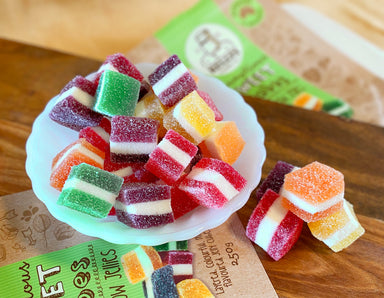The Ultimate Guide To I Luv Candi
The Ultimate Guide To I Luv Candi
Blog Article
About I Luv Candi
Table of ContentsThe I Luv Candi IdeasI Luv Candi Fundamentals ExplainedIndicators on I Luv Candi You Need To KnowMore About I Luv CandiI Luv Candi Things To Know Before You Get This
We've prepared a lot of company prepare for this sort of task. Right here are the usual customer segments. Consumer Sector Summary Preferences Exactly How to Discover Them Children Youthful consumers aged 4-12 Vivid sweets, gummy bears, lollipops Companion with regional colleges, host kid-friendly events Teens Adolescents aged 13-19 Sour candies, novelty products, stylish treats Engage on social media, work together with influencers Moms and dads Adults with kids Organic and much healthier choices, timeless sweets Offer family-friendly promotions, advertise in parenting magazines Pupils School trainees Energy-boosting candies, economical treats Companion with close-by schools, promote throughout examination periods Present Customers People trying to find presents Premium delicious chocolates, present baskets Produce captivating screens, provide customizable present alternatives In examining the monetary dynamics within our sweet store, we've located that clients normally spend.Monitorings suggest that a common consumer frequents the store. Specific periods, such as vacations and special occasions, see a rise in repeat check outs, whereas, during off-season months, the regularity may dwindle. lolly shop sunshine coast. Computing the lifetime value of a typical customer at the candy shop, we estimate it to be
With these variables in consideration, we can deduce that the ordinary income per consumer, over the course of a year, hovers. The most rewarding customers for a candy store are often households with young youngsters.
This demographic has a tendency to make constant purchases, enhancing the shop's earnings. To target and attract them, the sweet-shop can use vivid and playful marketing methods, such as vivid screens, appealing promos, and possibly even holding kid-friendly occasions or workshops. Producing an inviting and family-friendly atmosphere within the shop can likewise enhance the overall experience.
I Luv Candi Fundamentals Explained
You can additionally approximate your very own profits by using various presumptions with our economic strategy for a sweet-shop. Ordinary regular monthly revenue: $2,000 This kind of sweet store is typically a little, family-run service, perhaps recognized to locals but not attracting lots of travelers or passersby. The shop might offer a selection of usual sweets and a few homemade treats.
The shop doesn't normally lug rare or pricey items, focusing instead on affordable treats in order to maintain regular sales. Presuming an average costs of $5 per client and around 400 clients monthly, the monthly earnings for this sweet shop would be about. Typical regular monthly profits: $20,000 This sweet-shop take advantage of its tactical place in a hectic urban area, drawing in a large number of clients looking for sweet indulgences as they go shopping.
Along with its diverse sweet choice, this store could also sell associated products like gift baskets, candy bouquets, and uniqueness things, providing several earnings streams - pigüi. The store's area requires a higher budget plan for lease and staffing however causes higher sales volume. With an estimated average costs of $10 per client and about 2,000 clients per month, this store might generate
The Ultimate Guide To I Luv Candi
Found in a major city and visitor location, it's a big facility, often topped numerous floorings and potentially part of a national or international chain. The shop uses an enormous variety of sweets, consisting of exclusive and limited-edition items, and product like top quality clothing and accessories. It's not just a store; it's a destination.
The operational expenses for this kind of store are considerable due to the area, dimension, staff, and includes supplied. Thinking an ordinary acquisition of $20 per consumer and around 2,500 clients per month, this front runner shop might accomplish.
Category Instances of Expenses Typical Monthly Price (Variety in $) Tips to Decrease Costs Lease and Utilities Shop rent, power, water, gas $1,500 - $3,500 Consider a smaller sized place, discuss rent, and use energy-efficient lighting and devices. Supply Sweet, treats, packaging products $2,000 click here for more info - $5,000 Optimize supply monitoring to lower waste and track prominent things to stay clear of overstocking.
Advertising And Marketing and Advertising and marketing Printed matter, on-line ads, promotions $500 - $1,500 Concentrate on cost-effective digital advertising and marketing and utilize social networks platforms for totally free promotion. pigüi. Insurance policy Organization responsibility insurance coverage $100 - $300 Shop around for affordable insurance coverage rates and think about packing policies. Equipment and Maintenance Cash money signs up, present shelves, fixings $200 - $600 Buy used tools when feasible and execute regular maintenance to prolong tools lifespan
Some Of I Luv Candi
Bank Card Processing Charges Fees for processing card repayments $100 - $300 Negotiate reduced handling charges with repayment processors or check out flat-rate choices. Miscellaneous Workplace materials, cleaning products $100 - $300 Get wholesale and try to find discounts on supplies. A sweet shop becomes profitable when its complete earnings surpasses its overall fixed costs.

A large, well-located sweet store would obviously have a higher breakeven factor than a small shop that does not require much income to cover their costs. Curious regarding the profitability of your candy shop?
About I Luv Candi

Finally, financial downturns that minimize consumer costs can impact candy store sales and profitability, making it crucial for sweet-shop to handle their costs and adapt to transforming market problems to remain successful. These dangers are usually included in the SWOT analysis for a sweet-shop. Gross margins and net margins are vital indicators utilized to gauge the earnings of a sweet-shop organization.
Basically, it's the profit staying after deducting expenses straight pertaining to the sweet supply, such as acquisition expenses from vendors, manufacturing expenses (if the candies are homemade), and team salaries for those associated with manufacturing or sales. Internet margin, on the other hand, variables in all the costs the candy store incurs, consisting of indirect costs like management costs, advertising, rental fee, and taxes.
Candy shops typically have an ordinary gross margin.For instance, if your sweet shop gains $15,000 per month, your gross revenue would certainly be approximately 60% x $15,000 = $9,000. Think about a candy shop that marketed 1,000 candy bars, with each bar valued at $2, making the total earnings $2,000.
Report this page